The Legendary Mango
 Undoubtedly one of Jamaica’s most cherished and sought-after fruits, the mango reigns supreme in the hearts and palates of locals and visitors alike. Introduced to the island by South Asian settlers in the 18th century, this succulent delight has since proliferated, adorning the lush landscapes with its vibrant hues and tantalizing aromas. The mango’s versatility is unparalleled, with a dizzying array of varieties to tantalize every taste bud.
Undoubtedly one of Jamaica’s most cherished and sought-after fruits, the mango reigns supreme in the hearts and palates of locals and visitors alike. Introduced to the island by South Asian settlers in the 18th century, this succulent delight has since proliferated, adorning the lush landscapes with its vibrant hues and tantalizing aromas. The mango’s versatility is unparalleled, with a dizzying array of varieties to tantalize every taste bud.
From the beloved “Julie” or “St. Julian,” with its velvety flesh and intoxicating sweetness, to the robust “East Indian” variety, boasting a firm texture and a delightfully tangy kick, the options are endless. The “Tommy Atkins” mango, a favorite among connoisseurs, seduces with its vibrant orange hue and luscious, almost creamy essence. Let’s not forget the “Keith” mango, a true embodiment of tropical splendor, with its striking green skin concealing a tangy, fiber-rich interior.
During the peak mango season, which spans from March to September, Jamaicans indulge in a veritable mango frenzy, savoring the fruit in its purest form or incorporating it into an array of delectable dishes and beverages. From refreshing smoothies and tangy chutneys to succulent salsas and decadent desserts, the mango’s versatility knows no bounds.
The Tantalizing June Plum
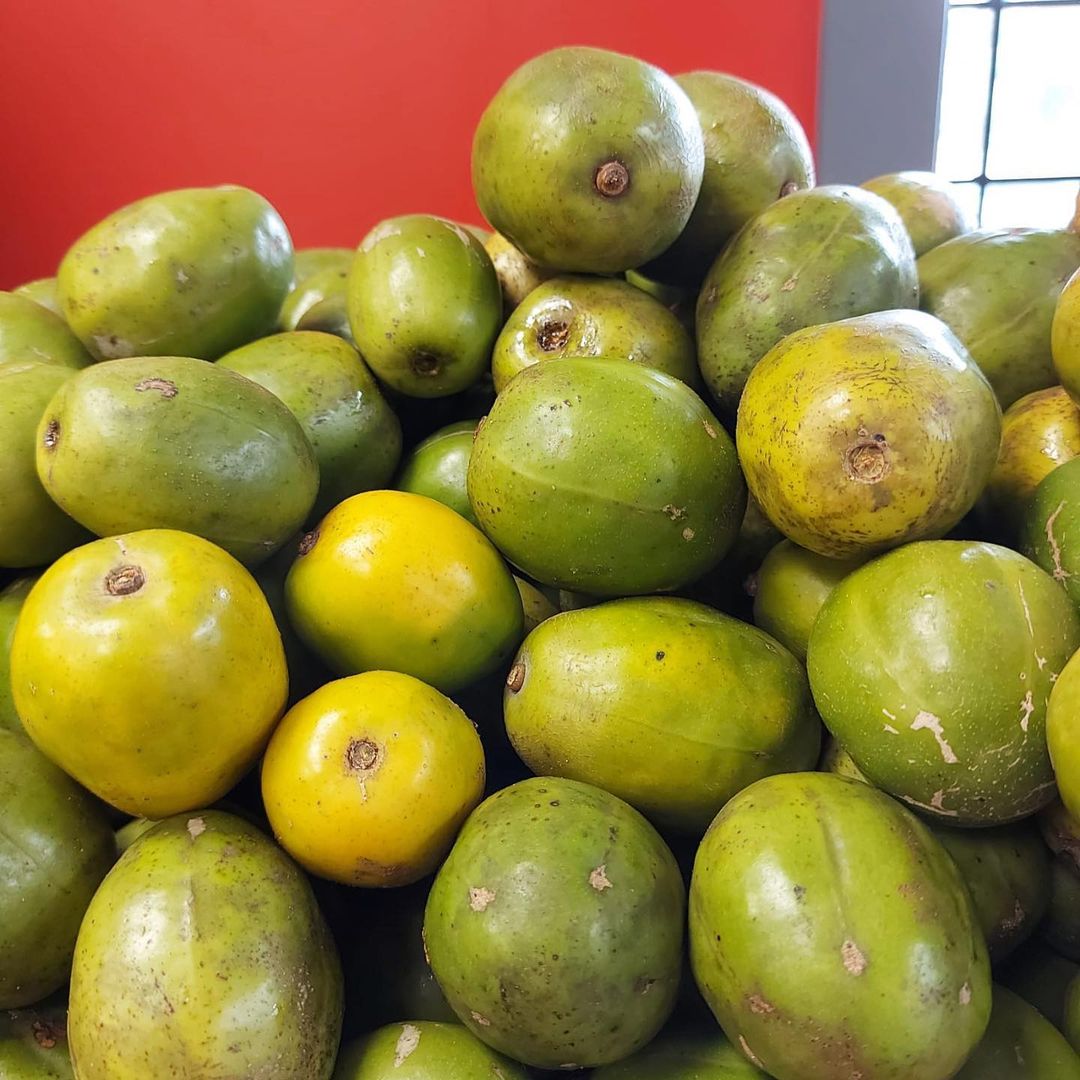 Introduced to Jamaica by the legendary Captain Bligh, likely from the Hawaiian islands, the June plum has firmly secured its place in the hearts of locals. This firm, crunchy fruit is relished both when ripe and unripe, offering a delightful range of flavors and textures to savor.
Introduced to Jamaica by the legendary Captain Bligh, likely from the Hawaiian islands, the June plum has firmly secured its place in the hearts of locals. This firm, crunchy fruit is relished both when ripe and unripe, offering a delightful range of flavors and textures to savor.
In its unripe state, the June plum is coated with a tantalizing blend of salt and pepper, transforming it into a beloved summertime snack affectionately known as “pepperpot.” As it ripens, the fruit unveils its true splendor, revealing a luscious, succulent interior that begs to be savored.
The June plum’s versatility extends beyond its fresh consumption, as it lends itself beautifully to an array of culinary creations. Its tangy essence is often captured in refreshing juices, while its sweetness shines through in delectable stewed desserts, where it is gently simmered with brown sugar, unveiling a depth of flavor that lingers on the palate.
The Exotic Sweetsop
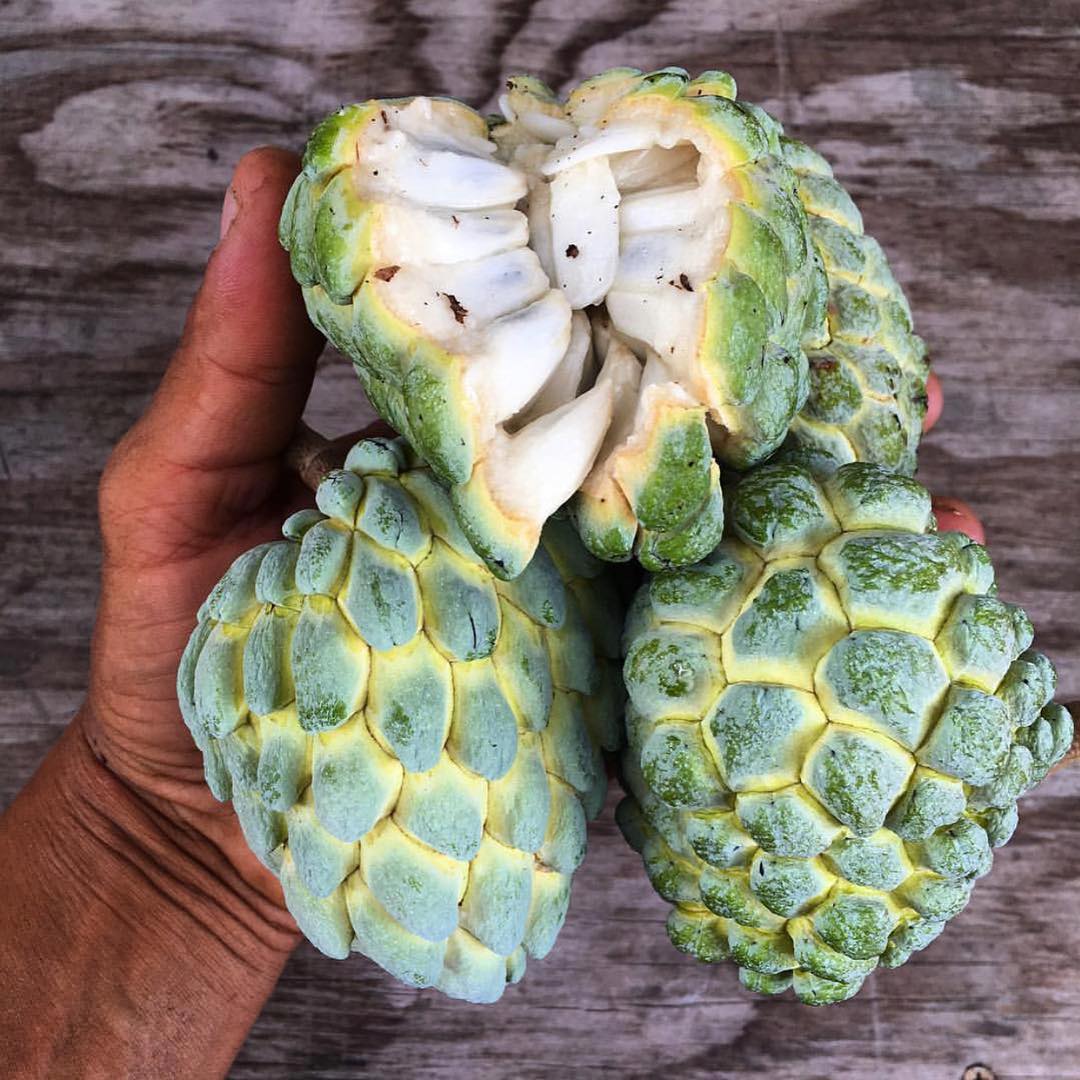 Shrouded in mystery, the origins of the sweetsop in Jamaica remain a subject of debate, with some tracing its roots to the island’s indigenous inhabitants, while others attribute its arrival to the Spanish conquistadors. Regardless of its provenance, this round, slightly heart-shaped fruit has become an integral part of Jamaica’s culinary heritage.
Shrouded in mystery, the origins of the sweetsop in Jamaica remain a subject of debate, with some tracing its roots to the island’s indigenous inhabitants, while others attribute its arrival to the Spanish conquistadors. Regardless of its provenance, this round, slightly heart-shaped fruit has become an integral part of Jamaica’s culinary heritage.
Beneath its lumpy, green exterior lies a creamy, custard-like flesh that melts in the mouth, revealing a delicate sweetness that is both comforting and intriguing. Often enjoyed in its natural state, straight from the tree, the sweetsop is a true embodiment of Jamaica’s tropical bounty.
The Distinctive Soursop
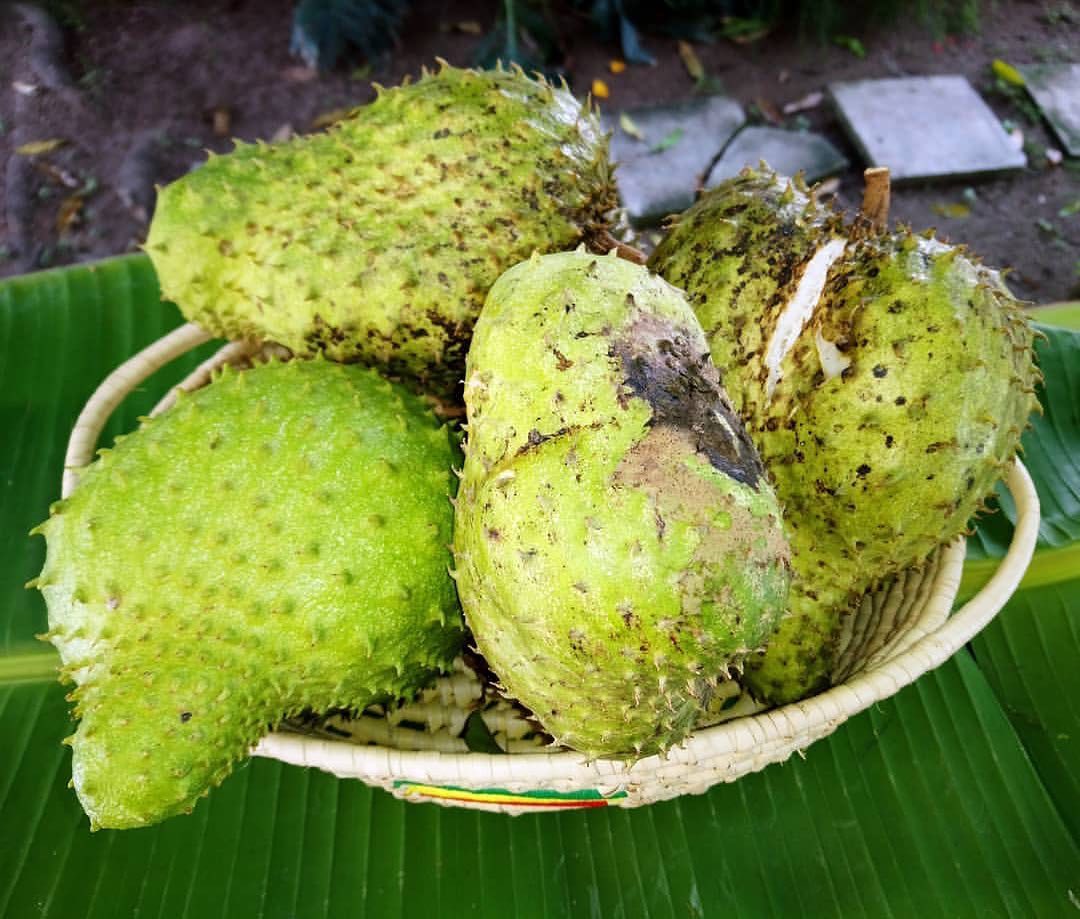 Known by various monikers, such as “Guanabio” or “Graviola,” the soursop is a true paradox – a fruit that defies its name with a delightful blend of flavors reminiscent of pineapple and banana. Its unique appearance, adorned with a green, leather-like skin and curved, pliable spines, only adds to its allure.
Known by various monikers, such as “Guanabio” or “Graviola,” the soursop is a true paradox – a fruit that defies its name with a delightful blend of flavors reminiscent of pineapple and banana. Its unique appearance, adorned with a green, leather-like skin and curved, pliable spines, only adds to its allure.
While some may shy away from its slightly acidic undertones, Jamaicans have embraced the soursop’s complexity, often transforming it into refreshing beverages. Combined with sweetened condensed milk or zesty lime, the soursop’s distinctive essence is elevated, creating a harmonious fusion of flavors that dances on the tongue.
Beyond its liquid manifestations, the soursop also lends its creamy pulp to an array of decadent desserts, including the ever-popular soursop ice cream – a true testament to Jamaica’s culinary ingenuity and appreciation for this remarkable fruit.
The Tangy Tamarind
 Believed to have arrived on Jamaican shores in the 19th century, alongside the wave of Indian indentured laborers, the tamarind has since woven itself into the fabric of the island’s culinary tapestry. This pod-like fruit, with its distinctive brown or reddish-brown hue, conceals a tangy, acidulous pulp that adds a unique depth of flavor to a myriad of dishes.
Believed to have arrived on Jamaican shores in the 19th century, alongside the wave of Indian indentured laborers, the tamarind has since woven itself into the fabric of the island’s culinary tapestry. This pod-like fruit, with its distinctive brown or reddish-brown hue, conceals a tangy, acidulous pulp that adds a unique depth of flavor to a myriad of dishes.
While the tamarind’s tartness may be too intense for some, Jamaicans have embraced it wholeheartedly, transforming it into a variety of delectable treats. Perhaps the most iconic of these is the beloved “tamarind ball,” a bite-sized delight crafted by rolling the fruit’s pulp with sugar, ginger, and an array of spices, before allowing it to dry to perfection.
Beyond its confectionery applications, the tamarind also lends its distinctive tang to refreshing juices and zesty sauces, adding a vibrant burst of flavor to savory dishes and quenching the thirst on even the warmest of Caribbean days.
The Iconic Sugar Cane
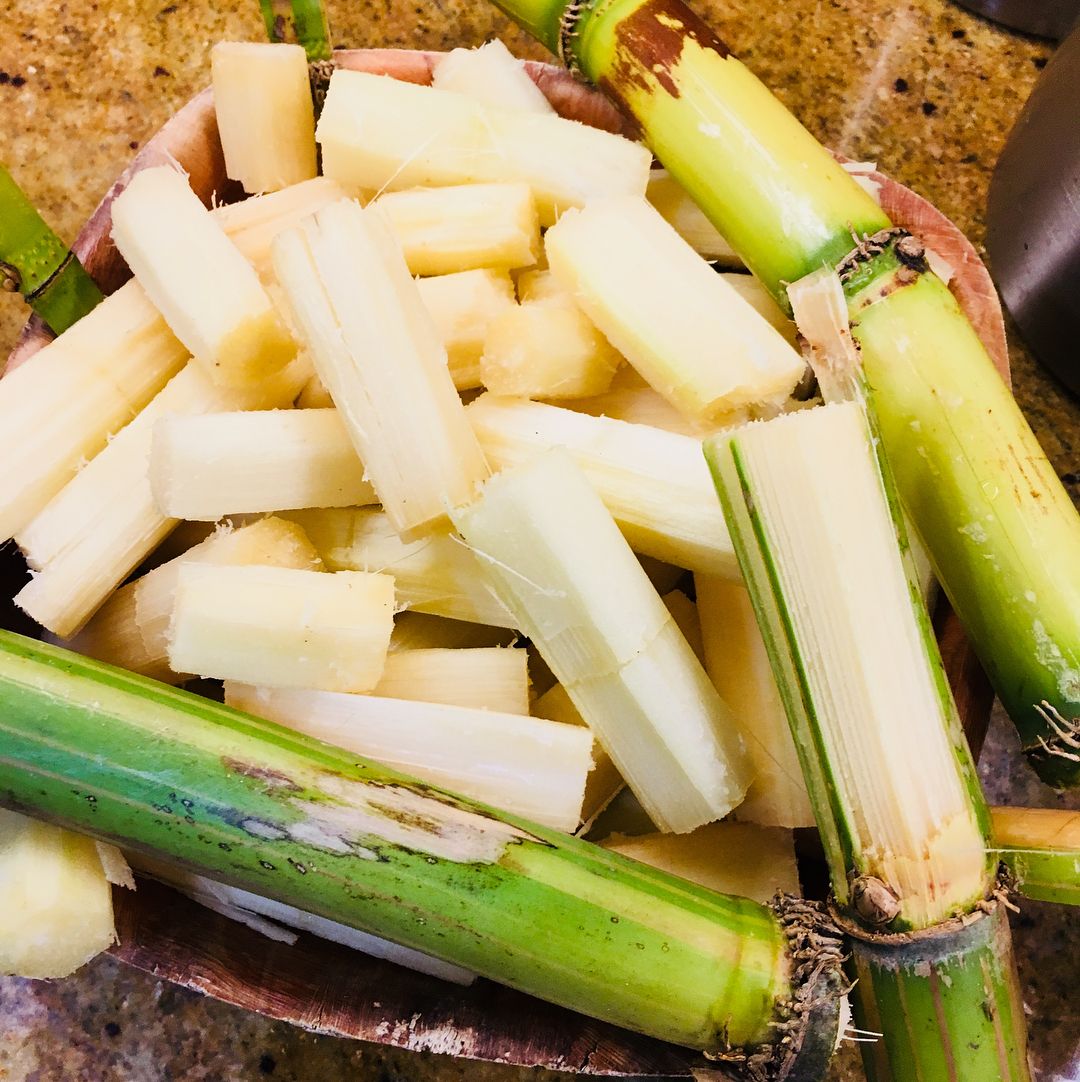 While not technically a fruit, the inclusion of sugar cane in this culinary odyssey is a testament to its deep-rooted significance in Jamaica’s history and culture. Introduced to the Caribbean by Christopher Columbus himself, sugar cane quickly took root on the island, becoming the driving force behind the brutal institution of slavery that shaped Jamaica’s past.
While not technically a fruit, the inclusion of sugar cane in this culinary odyssey is a testament to its deep-rooted significance in Jamaica’s history and culture. Introduced to the Caribbean by Christopher Columbus himself, sugar cane quickly took root on the island, becoming the driving force behind the brutal institution of slavery that shaped Jamaica’s past.
Today, however, sugar cane is celebrated for its sweet, grassy essence and its role in the production of two quintessential Jamaican staples: sugar and rum. Across the island, particularly in the western regions, mature cane is peeled, cut into convenient lengths, and sold by roadside vendors, providing a refreshing and nostalgic treat for locals and visitors alike.
To savor the true essence of sugar cane, one must simply gnaw on the fibrous stalks, releasing the sweet, invigorating juice within. It’s a simple pleasure, yet one that connects Jamaicans to their heritage and serves as a reminder of the island’s resilience and ability to transform even the most bitter histories into something sweet.
The Versatile Guava
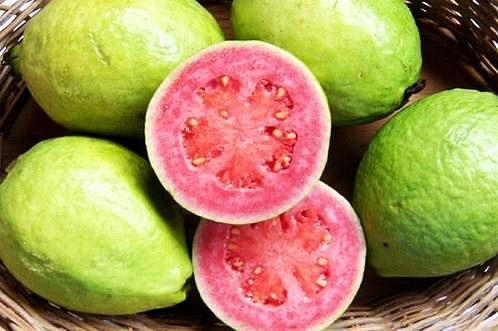 Hailing from the eastern parish of St. Thomas, the guava is a true Jamaican favorite, celebrated for its versatility and abundance. Every part of this fruit is edible, from its vibrant yellow skin to the tangy, musky outer flesh, and the delicate, pink interior dotted with countless tiny seeds.
Hailing from the eastern parish of St. Thomas, the guava is a true Jamaican favorite, celebrated for its versatility and abundance. Every part of this fruit is edible, from its vibrant yellow skin to the tangy, musky outer flesh, and the delicate, pink interior dotted with countless tiny seeds.
As the guava ripens, its aroma becomes increasingly potent, filling the air with a heady, tropical scent that is both alluring and unmistakable. Jamaicans relish the guava in its natural state, savoring its unique flavor profile, but they also transform it into an array of culinary delights.
Guava sauce, a tangy and slightly sweet condiment, is a beloved accompaniment to a variety of dishes, while guava juice quenches thirst and refreshes the palate with its distinctive tang. The fruit’s versatility knows no bounds, lending itself beautifully to jams, jellies, and even desserts, showcasing the island’s culinary ingenuity and appreciation for its bountiful offerings.
The Vibrant Cherries
 Nestled among the lush foliage of Jamaica’s backyard gardens and rural landscapes, cherry trees burst forth with their diminutive, ruby-hued treasures – a true delight for young and old alike. These tiny, tangy-sweet fruits are native to the Caribbean, as well as regions of Southern Mexico, Central America, Peru, and Bolivia, and have become an integral part of Jamaica’s culinary heritage.
Nestled among the lush foliage of Jamaica’s backyard gardens and rural landscapes, cherry trees burst forth with their diminutive, ruby-hued treasures – a true delight for young and old alike. These tiny, tangy-sweet fruits are native to the Caribbean, as well as regions of Southern Mexico, Central America, Peru, and Bolivia, and have become an integral part of Jamaica’s culinary heritage.
While cherries are often enjoyed in their natural state, plucked fresh from the tree and savored for their burst of tangy sweetness, they truly shine when transformed into refreshing juices. Cherry juice, infused with a hint of ginger and sweetened with cane sugar, is a beloved beverage that quenches thirst and tantalizes the taste buds with its vibrant flavor.
Beyond their liquid manifestations, cherries also lend their distinctive essence to an array of desserts and baked goods, showcasing the island’s ingenuity in harnessing the full potential of its bountiful offerings.
The Captivating Guinep
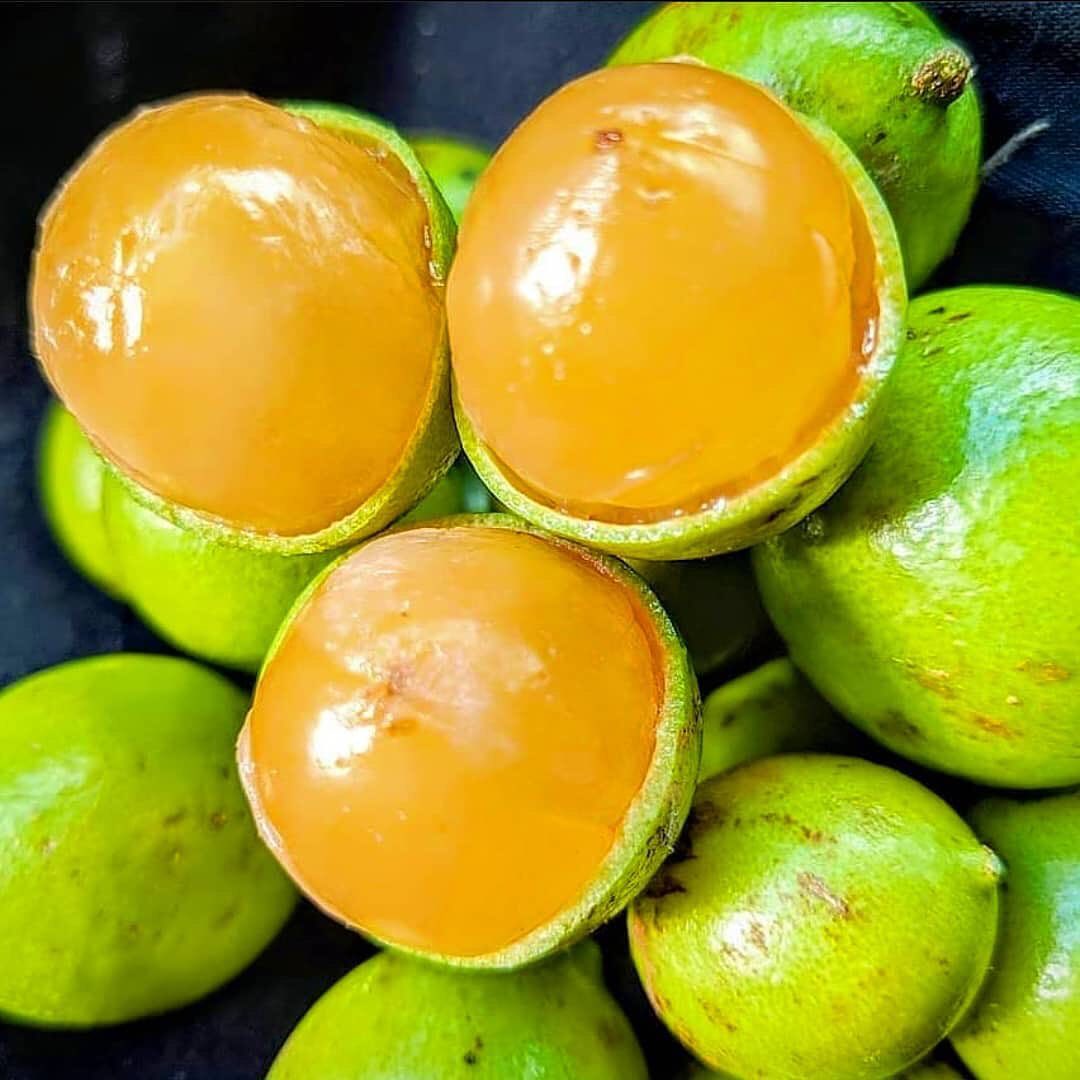 As the warm Jamaican summer unfolds, the arrival of the guinep is eagerly anticipated by locals of all ages. Despite its somewhat staining nature, this delightful fruit has captured the hearts and palates of Jamaicans, who revel in its unique and ever-changing flavor profile.
As the warm Jamaican summer unfolds, the arrival of the guinep is eagerly anticipated by locals of all ages. Despite its somewhat staining nature, this delightful fruit has captured the hearts and palates of Jamaicans, who revel in its unique and ever-changing flavor profile.
Encased within a vibrant green shell, the guinep conceals a delicate, slightly pinkish flesh that clings to its seed, beckoning to be savored. While some may find the process of extracting the fruit’s essence laborious, the reward is well worth the effort, as each bite unveils a delightful dance of flavors – sometimes tangy, sometimes sweet, and always surprising.
The true wonder of the guinep lies in its unpredictability, as each fruit offers a unique taste experience, ranging from a delicate tartness to an almost overwhelming sweetness. This ever-changing nature only adds to the allure of this captivating Jamaican treat, ensuring that every encounter is a delightful adventure for the senses.
The Beloved Naseberry
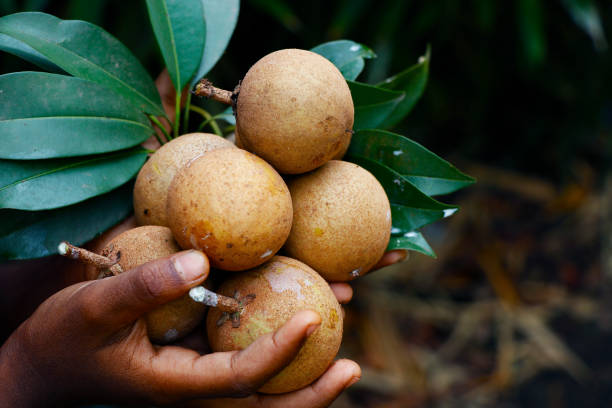
Known as “Sapodilla” in other Caribbean nations, the naseberry holds a special place in the hearts and palates of Jamaicans. This relatively small, round fruit boasts a rich brown skin that conceals a luscious, equally hued flesh, punctuated by several black seeds.
What truly sets the naseberry apart, however, is its exquisite flavor and aroma. As one bites into the fruit’s tender flesh, a wave of intense sweetness envelops the senses, accompanied by a striking aroma that is both comforting and intriguing.
Jamaicans relish the naseberry as a simple, yet deeply satisfying snack, savoring its mellow essence at any time of day. Its versatility, however, extends far beyond its fresh consumption, as the fruit’s unique flavor lends itself beautifully to an array of desserts and baked goods, showcasing the island’s culinary ingenuity and appreciation for its bountiful offerings.
The Exotic Otaheite Apple
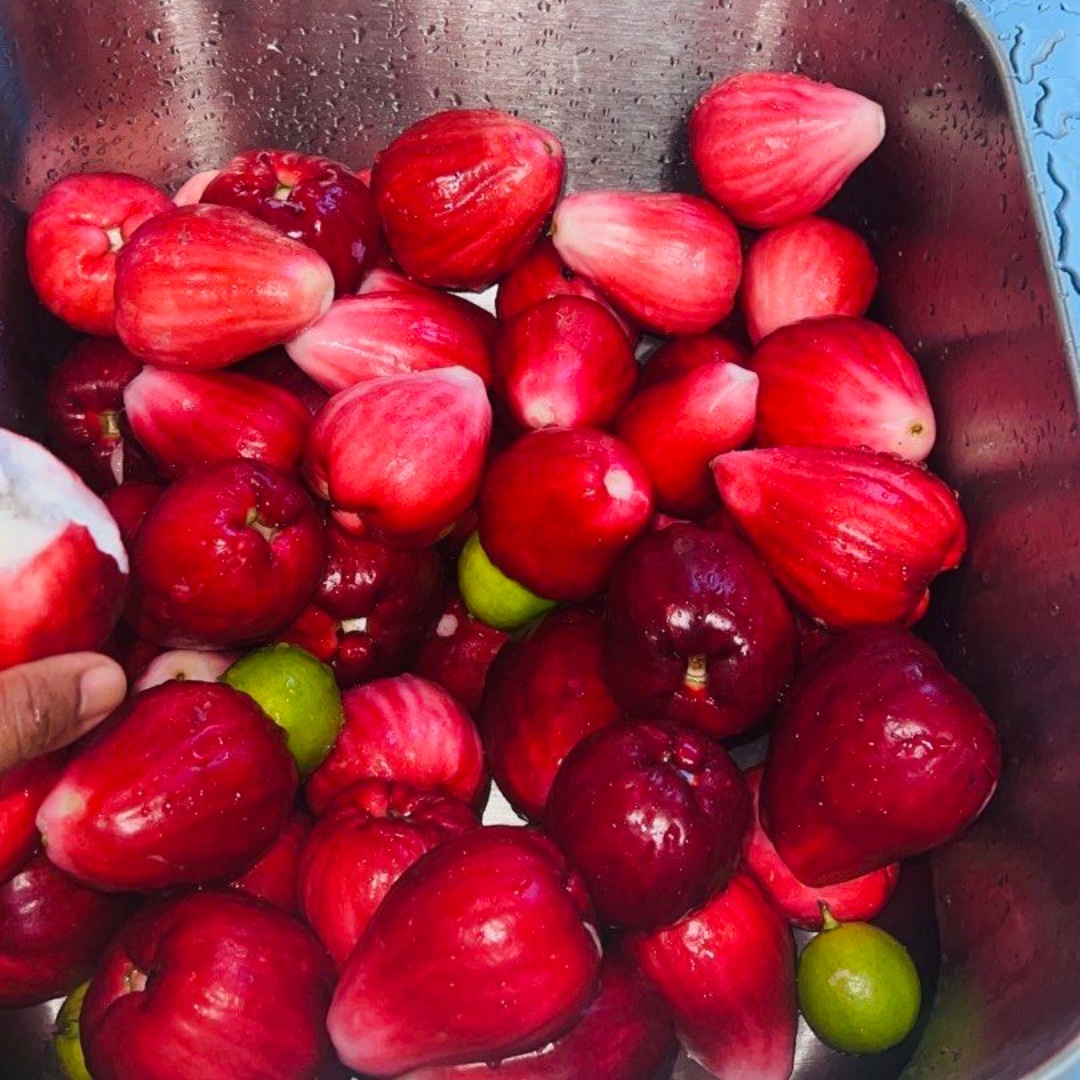 Hailing from the distant shores of the South Pacific islands, the Otaheite apple, also known as the “Malay rose apple” or “mountain apple,” has found a beloved home in Jamaica. Introduced to the island by the legendary Captain Bligh, this oblong, pear-shaped fruit boasts a thin, smooth, and vibrant red skin that conceals a white, spongy flesh of unparalleled sweetness.
Hailing from the distant shores of the South Pacific islands, the Otaheite apple, also known as the “Malay rose apple” or “mountain apple,” has found a beloved home in Jamaica. Introduced to the island by the legendary Captain Bligh, this oblong, pear-shaped fruit boasts a thin, smooth, and vibrant red skin that conceals a white, spongy flesh of unparalleled sweetness.
While many locals revel in the simple pleasure of plucking the Otaheite apple directly from the tree and savoring its unique flavor, others have embraced its versatility, transforming it into an array of culinary delights. Refreshing juices, infused with the zesty essence of ginger and the tangy notes of lime, offer a refreshing respite from the Caribbean heat, while desserts and baked goods showcase the fruit’s ability to lend its distinctive sweetness to a myriad of creations.
The Celestial Star Apple
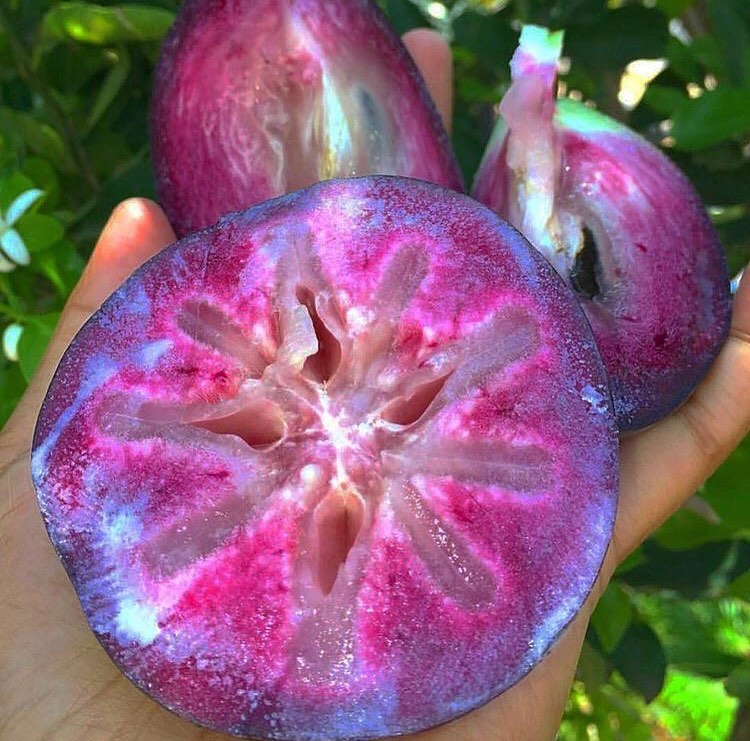 Revered as the “Matrimony” fruit by Jamaicans, the star apple is a true celestial delight, its round, orange-like form concealing a mesmerizing interior that reveals a star-shaped pattern when sliced crosswise. This native Jamaican fruit exists in two captivating variations – the deep purple star apple, boasting an equally rich and vibrant flesh, and the green-skinned variety, which unveils a stark white interior.
Revered as the “Matrimony” fruit by Jamaicans, the star apple is a true celestial delight, its round, orange-like form concealing a mesmerizing interior that reveals a star-shaped pattern when sliced crosswise. This native Jamaican fruit exists in two captivating variations – the deep purple star apple, boasting an equally rich and vibrant flesh, and the green-skinned variety, which unveils a stark white interior.
While the star apple’s appearance is undoubtedly striking, it is its flavor that truly captivates the senses. The purple variety offers a delicate sweetness that lingers on the palate, while the green iteration boasts a more pronounced tartness that dances delightfully with its inherent sweetness.
Jamaicans savor the star apple in its purest form, often plucking the fruit from the tree and savoring its celestial essence on the spot. However, the fruit’s versatility extends far beyond its fresh consumption, as its unique flavor profile lends itself beautifully to an array of desserts, jams, and preserves, ensuring that its celestial splendor can be enjoyed year-round.
The Vibrant Pineapple
 No culinary exploration of Jamaica’s iconic fruits would be complete without paying homage to the vibrant and tantalizing pineapple. Introduced to the island by the indigenous Taíno people, this spiky, golden delight has become an integral part of Jamaica’s culinary heritage, lending its distinctive sweetness and tang to a myriad of dishes and beverages.
No culinary exploration of Jamaica’s iconic fruits would be complete without paying homage to the vibrant and tantalizing pineapple. Introduced to the island by the indigenous Taíno people, this spiky, golden delight has become an integral part of Jamaica’s culinary heritage, lending its distinctive sweetness and tang to a myriad of dishes and beverages.
Beyond its fresh consumption, where its juicy flesh is savored in all its glory, the pineapple’s versatility truly shines. From refreshing juices and tangy chutneys to succulent salsas and decadent desserts, this tropical treasure lends its unique essence to an array of culinary creations.
At the renowned Croydon Plantation, visitors can embark on a journey through Jamaica’s pineapple heritage, discovering the staggering 17 varieties cultivated on its lush grounds. From the iconic “Cowboy” and “Ripley” to the lesser-known “Smooth Cayenne” and “Sugarloaf,” each variety boasts its own unique flavor profile and texture, ensuring that every bite is a true celebration of Jamaica’s bountiful offerings.
The Elusive Locust Fruit
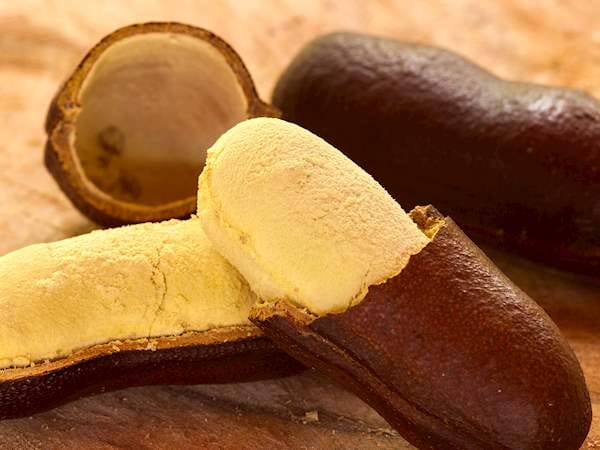 Shrouded in mystery and intrigue, the locust fruit, also known as the “stinking toe,” is a true curiosity in Jamaica’s culinary landscape. Deriving its peculiar moniker from the tree’s distinctive pods, which resemble giant toes dangling from its branches, this fruit is not for the faint of heart.
Shrouded in mystery and intrigue, the locust fruit, also known as the “stinking toe,” is a true curiosity in Jamaica’s culinary landscape. Deriving its peculiar moniker from the tree’s distinctive pods, which resemble giant toes dangling from its branches, this fruit is not for the faint of heart.
Beneath its unassuming exterior lies a dry, fibrous interior that requires a hammer or substantial rock to breach its defenses. Once conquered, however, the locust fruit reveals a unique and intriguing essence that has captivated the palates of Jamaicans for generations.
While its aroma may be off-putting to some, likened to the pungent notes of Parmesan or blue cheese, the locust fruit’s flavor is a true revelation. Often grated over a strainer to create a rich, nutty flour, this elusive fruit lends its essence to an array of baked goods and smoothies, defying expectations with every bite.
For the adventurous palate, the locust fruit offers a taste of Jamaica’s culinary heritage, a testament to the island’s ability to transform even the most unlikely of ingredients into something truly extraordinary.
For recommendations on some of the best times to visit Jamaica, you can check out our guide here.
—
If you’re traveling to Jamaica alone, ensure you take all the necessary measures to keep safe. Read about how you can stay safe while visiting Jamaica. If you decide to visit any resort, be sure to tag us in your photos and videos @resortcaribbean, and follow our socials: Instagram, Facebook, YouTube.







![What You Need to Know before Visiting Azul Beach Resort Negril Jamaica Gourmet All-Inclusive [Resort Review] Azul Beach Resort Pool](https://resortcaribbean.co/wp-content/uploads/2021/09/20210828_091210-2-100x70.jpg)
![Visiting Ocean Coral Spring – One of Jamaica’s Most Famous Resorts [Resort Review] Visiting Ocean Coral Spring - One of Jamaica's Most Famous Resorts](https://resortcaribbean.co/wp-content/uploads/2021/11/20211106_155809-scaled-e1716408051807-100x70.jpg)
[…] 14 Best Jamaican Fruits to Try on Vacation […]